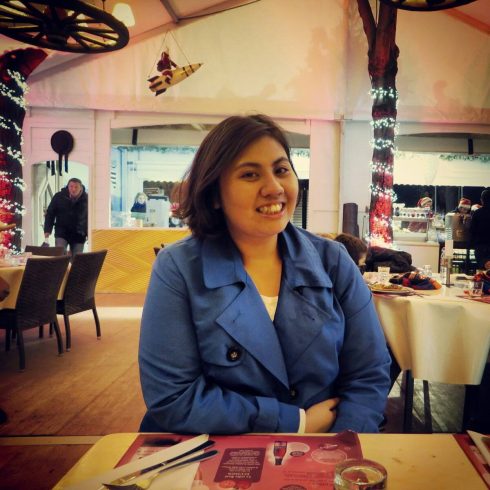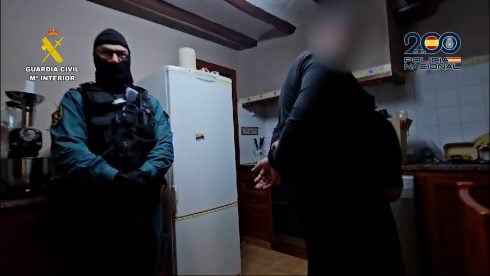The Olive Press goes all Baroque and heads to Priego de Córdoba, a peaceful town – even during feria time
NOT much remains of its Roman history when Rueda, as Priego de Córdoba was then known, was a semi-important cattle town under the rule of nearby Ipolcobulcula (maps now advertise this place as humble old Carcabuey). Nowadays, it is hard to find a cow wandering in the mountains of the surrounding Sierra Subbética range in the south of the Cordoba province.
Instead, Priego’s cultural heritage lies in its many Baroque churches. All free to enter, there are eight within a stone’s throw of the central Plaza de Constitucion.
One worth taking time out to visit is the Iglesia de la Asunción. The church is found in the Barrio de La Villa, that “mini-Albaicín” Moorish area of Priego. I had first noticed it the night before when we were sitting enjoying a glass of fino on the terrace of a nearby bar. The church has an unmissable multi-layered, angled, gilded and blue pitched roof.
Inside is no less spectacular with its icing on the cake-esque sanctuary (I am speaking literally as the walls and ceiling seem to have been fashioned out of icing sugar) and main altar, both of which have been granted National Monument status.
Bloody bonsais
The weekend of our visit, the 16th century sandstone Carnicerías Reales (Royal Slaughterhouse) was playing host to the town’s 20th annual bonsai tree competition. A crowd of 15 people or so was slowly making its way around the edges of the former abattoir’s central courtyard, inspecting the 50 miniature pines, citrus and – with this being Andalusia – olive trees.
“This is a one of Spain’s most highly regarded bonsai competitions,” the doorman told me after I had asked him whether the competition was naught but a local curiosity. “It draws exhibitors and visitors from all over.”
Being a one-time bonsai owner myself (the tree could not cope with my excessive watering) I made my way round, admiring the attention to detail and care that must go into miniature tree maintenance.
Republicans and Kings
The huge 18th and 19th century mansions that line either side of Calle Rio were once home to Priego’s elite.
Today, however, they are solicitors’ offices, shops and night clubs. One has been converted into a museum dedicated to the life of the town’s most famous son: Niceto Alcalá Zamora, the first President of la Niña Bonita (the Second Republic to you and me). In fact, it was his birthplace. Born in the front bedroom on the first floor, his crib still stands in the corner closest to the French window, which looks onto the street.
Moving from room to room, you find souvenirs of Alcalá’s childhood, professional life – he was a lawyer before moving into politics, time as leader of the country and exile (he died in Argentina in 1978 after fleeing the dictatorship of General Franco); there are wooden toys, the flag of Republican Spain (similar to today’s but with the bottom third mauve instead of red) and the deckchair in which he would sit during his final days.
Of particular interest are old RCA and Columbia 78rpms of anthems of that ill-fated republic. I cannot help but think neither label would release anything as racy nowadays.
Beyond Calle Rio lies one of Priego’s most visited tourist attractions: the opulent Fuente del Rey and the more modest Fuente de la Salud.
The King’s Fountain (as the larger of the two translates) is kept full of water by 180 spouts around its edges. In the centre, there is a statue of the Greek/Roman god of H2O Neptune and his wife Amphitrite, who is being returned to her husband on the back of a dolphin following her failed escape attempt. Not for nothing is Priego known as the City of Water.
Above this is the Fountain of Health. Built in the 16th century, local legend has it the fountain is on the site where Alfonso XI based his camp before the Christian forces wrestled control of the town from the occupying Moors in 1341.
Saint (who leaves no) Mark
Posters around the town promised Saturday to be a day of “flamenco, cheese and ham, wine and dancing.” Huzzah! we thought, being the types to enjoy a bit of a knees up. The occasion was the feast day of St Mark, one of Priego’s patron saints.
Surpressed under the Franco regime, St Mark celebrations have recently been reintroduced to the town although the council seems to have told no-one but a section of Priego’s youth. The only sign that a feria was in full-swing was the sight of an underage drinker being walked home, supported on both sides by slightly more sober friends: a bit like a Saturday afternoon in St Helens.
Antonio, our barman at Los Colorines, found half way down Calle Mesones, did assure us the town’s summer feria is a tad livelier after we had asked him why St Mark celebrations were a damp squib. “The ayuntamiento re-introduced it 25 years ago but nobody cares,” he said. “Come in September for the Feria Real when things really liven up.”
We ordered another fino, toasted peaceful Priego, paid up and left.






